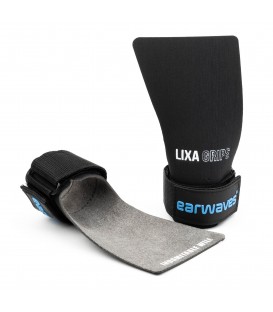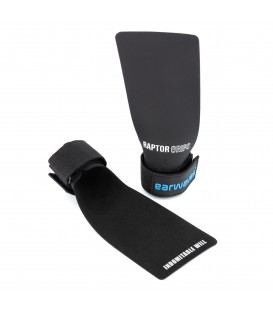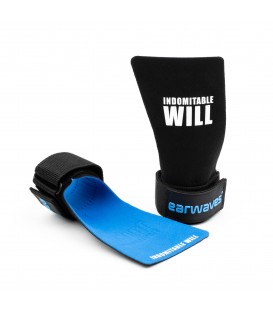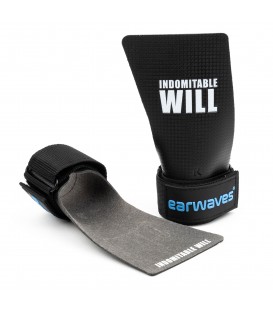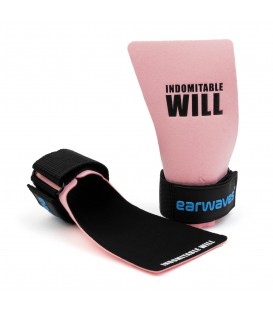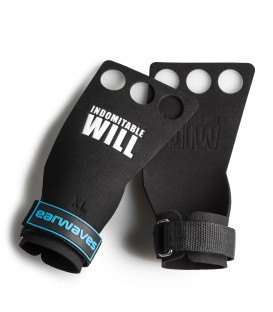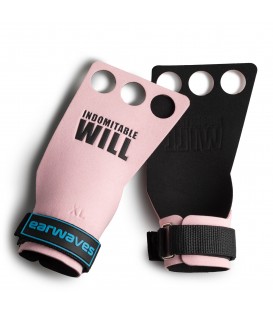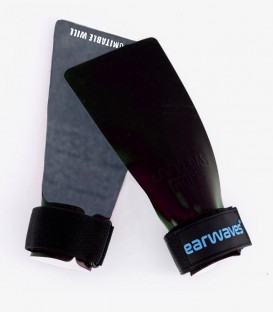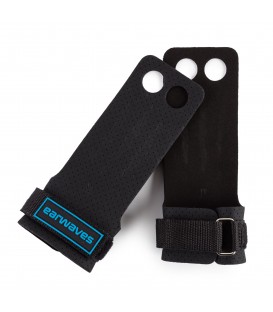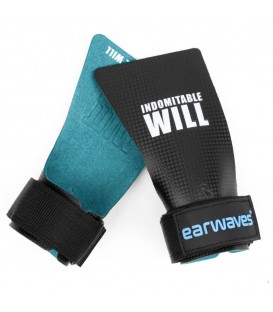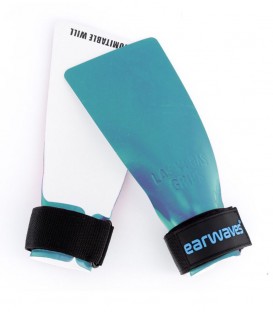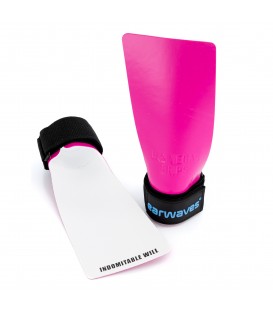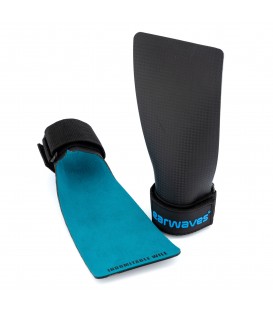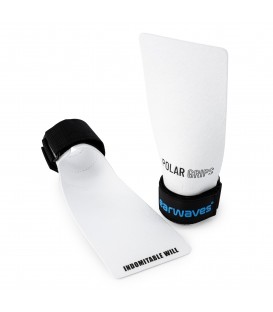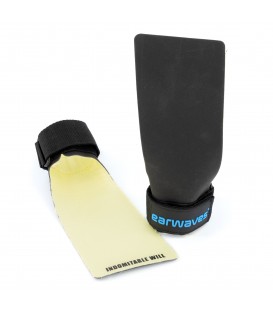-
Lixa® Grips
39,90 € Out of stockOut of stock2.3 mm thick in rough and ultra-resistant Lixa Polymer. Hard grips with unmatched durability and resistance and perfect grip for movements on the bar. Tested and stressed by all our athletes. -
Raptor® v2.0 Grips
39,90 € In Stock2 mm thick special synthetic fabric and very complete. Very high durability, resistance and grip and tremendously comfortable both on bars and rings. -
Predator Fingerless Grips - Blue
34,90 € In Stock2 mm thick special synthetic fabric and very complete. Very high durability, resistance and grip and tremendously comfortable both on bars and rings. -
Spino Carbon Grips - 3 Holes
34,90 € In StockThe toughest in the range. In addition, the braided fibre of its outer face provides a 5 star grip allowing fluid rotation on the bar. It is a durable fabric with very high wear resistance offering a very high durability. -
Predator Fingerless Grips - Pink
34,90 € In Stock2 mm thick special synthetic fabric and very complete. Very high durability, resistance and grip and tremendously comfortable both on bars and rings. -
Predator Grips - 3 Holes
34,90 € Out of stockOut of stock2 mm thick special synthetic fabric and very complete. Very high durability, resistance and grip and tremendously comfortable both on bars and rings. -
Predator Grips Pink - 3 Holes
34,90 € Out of stockOut of stock2 mm thick special synthetic fabric and very complete. Very high durability, resistance and grip and tremendously comfortable both on bars and rings. -
Spino Carbon Grips - 3 Holes
70,00 € Product available with different optionsProduct available with different optionsThe toughest in the range. In addition, the braided fibre of its outer face provides a 5 star grip allowing fluid rotation on the bar. It is a durable fabric with very high wear resistance offering a very high durability. -
Raptor grips 3 - Holes
44,95 € In StockThe Lightest and thickest. 1.2 mm thickness and made with a double sided second layer of genuine leather with triple stitching at the seams. -
Predator Grips - 2 Holes
26,90 € Out of stockOut of stock2 mm thick special synthetic fabric and very complete. Very high durability, resistance and grip and tremendously comfortable both on bars and rings. -
Spino Carbon Grips - 2 Holes
37,90 € In StockThe toughest in the range. In addition, the braided fibre of its outer face provides a 5 star grip allowing fluid rotation on the bar. It is a durable fabric with very high wear resistance offering a very high durability. -
Raptor Grips - 2 Holes
44,95 € In StockThe Lightest and thickest. 1.2 mm thickness and made with a double sided second layer of genuine leather with triple stitching at the seams. -
-
-
-
Find the best Hand Grips for you
Earwaves Hand Grips
What we can all agree on is that nowadays any athlete practicing a discipline that involves gymnastics on the bar or rings must have a pair of hand grips in their sports bag.
Not everyone chooses to use them in competition, as their benefits make them almost a standard, and possibly the most used accessory and talked about in the Box.
This is because the use of hand grips directly translates into a more consistent training due to the reduction of hand injuries that can keep us away from the bars and rings.
In addition, hand grips allow you to increase the time you can hang on the bar, which will improve your performance during the WOD, and therefore, your long-term form and skills.
Therefore...
Should I always train with hand grips?
If you regularly perform gymnastic or calisthenic movements such as pull-ups, bar muscle-ups, ring muscle-ups, toes to bar, or levers, you may need to get a pair of hand grips.
Some people even use them for Powerlifting movements when the bar surface has many rough spots and they are going to perform many repetitions. This can help avoid excessive friction with the texture of the bar.
However, this doesn't mean you have to wear them all the time. You can use them only in specific moments when there is a heavy load on the bar and, therefore, a greater risk of suffering the consequences of not wearing them.
Benefits of using hand grips
Regardless of personal preferences, here are the two basic benefits of using hand grips:
Hand protection
Possibly the number one motivation for using hand grips. Anyone who has ever suffered from annoying calluses that result in wounds knows how intensive this sport is in the use of grips in all its fundamental movements and the hindrance caused by having damaged hands.
Improved grip
Using hand grips improves your grip by enhancing how you pull towards the bar. This extra grip in the long run will improve your ability to hang from the bar and allow you to successfully perform a greater number of repetitions. It is common for certain athletes to reach failure due to their grip before experiencing muscle fatigue when performing long sets of pull-ups or gymnastic exercises.
Materials and their influence on hand grips:
One of the most relevant aspects when choosing your hand grips is undoubtedly the base material they are made of.
A hand grip essentially has two areas:
- The side that comes into contact with the bar, the outer side.
- The side that comes into contact with the palm of the hand, the inner side.
Regarding the second area, it is ideal for it to be made of a soft and comfortable material, as well as breathable, of course. Generally, the inner
side of hand grips is often made of leather, suede, or a synthetic material like microfiber. These materials provide a good grip and help prevent slipping while also offering some level of comfort for the hands.
For the outer side that comes into contact with the bar, there are different options available:
-
Leather: Leather hand grips are popular among athletes due to their durability and natural grip. They provide a secure hold on the bar and tend to mold to the shape of your hand over time. Leather grips can be a bit thicker, which some athletes prefer for added protection and durability.
-
Synthetic materials: Some hand grips are made of synthetic materials like synthetic leather or synthetic fabrics. These materials are often more affordable and can offer good grip and durability. They may not mold to the shape of your hand as well as leather grips but can still provide adequate protection and grip.
-
Silicone: Silicone hand grips have gained popularity recently due to their unique properties. They are lightweight, flexible, and provide excellent grip on the bar. Silicone grips are also known for their durability and resistance to moisture, making them suitable for sweaty workouts. They are often thinner than leather grips, offering a more minimalist feel.
Ultimately, the choice of material for hand grips depends on personal preference, comfort, and the specific requirements of your training. Some athletes prefer the natural feel and durability of leather, while others opt for the lightweight and flexible nature of silicone grips. It's important to try different options and find the material that works best for you.
Additionally, it's worth considering factors such as sizing, adjustable straps, and wrist support when choosing hand grips. Proper sizing ensures a secure fit, adjustable straps allow for customization, and wrist support can be beneficial for individuals with wrist issues or those who prefer extra stability during movements.
Remember to take care of your hand grips by cleaning them regularly and allowing them to dry properly to maintain their longevity and hygiene.
